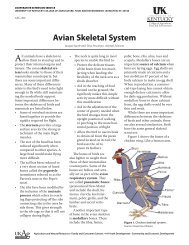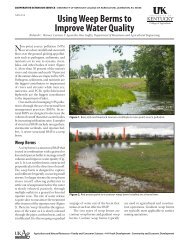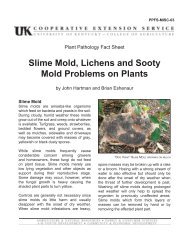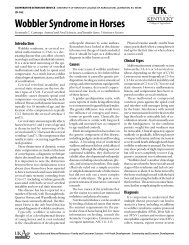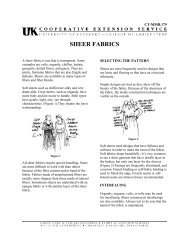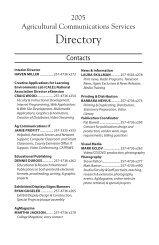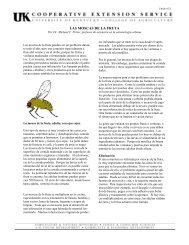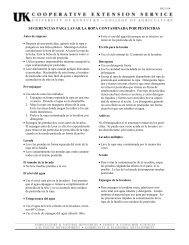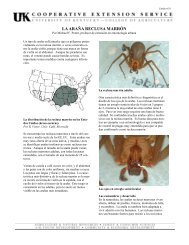Chapter 3 - CHICKEN ANATOMY AND PHYSIOLOGY
Chapter 3 - CHICKEN ANATOMY AND PHYSIOLOGY
Chapter 3 - CHICKEN ANATOMY AND PHYSIOLOGY
You also want an ePaper? Increase the reach of your titles
YUMPU automatically turns print PDFs into web optimized ePapers that Google loves.
With regard to meat quality, the poultry industry has seen an increase in the occurrence<br />
of Pale Soft and Exudative (PSE) meat over the past several years. PSE meat is the<br />
result of accelerated postmortem glycolysis, which results in a rapid pH decline while<br />
carcass temperatures are still high. Processors are concerned with the appearance of<br />
PSE meat in fresh tray packs as the pale color can affect color uniformity within the<br />
package. Although pale meat is still healthy, it is less pleasing to the customer. All<br />
poultry meat looses moisture, but pale meat looses slightly more. Pale meat is estimated<br />
to result in an annual loss of about $200 million for the U.S. broiler industry.<br />
Another meat quality concern is Green Muscle Disease or Deep Pectoral Myopathy<br />
(see Figure 3.11), which is the necrosis of the Pectoralis Minor (tender) muscle of<br />
poultry. Necrotic tenders appear yellowish-green in color. Green Muscle Disease results<br />
from vigorous activity of both major and minor pectoralis muscles, but only the tenders<br />
are afflicted. During contraction, muscles normally swell with increased blood flow to<br />
supply needed oxygen and nutrients. Compared to other muscles, the tenders have a<br />
more rigid muscle cover and are confined to a tight space within the body such that they<br />
can’t expand to accommodate this increased blood flow. The net result of the muscle<br />
being confined and compressed is self strangulation, suffocation, and eventually<br />
necrosis.<br />
Figure 3.11 - Chicken with green muscle disease<br />
The incidence of Green Muscle Disease increases with higher market weight in broilers,<br />
and more cases are reported in higher yielding crosses and in males. Increased broiler<br />
activity induced by such factors as feed or water outages, lighting programs, catching<br />
and live haul, and even excessive noise, may result in an increased incidence of Green<br />
Muscle Disease. The increased activity associated with free-range broiler production has<br />
resulted in an increase incidence of Green Muscle Disease in this industry.<br />
3.12



